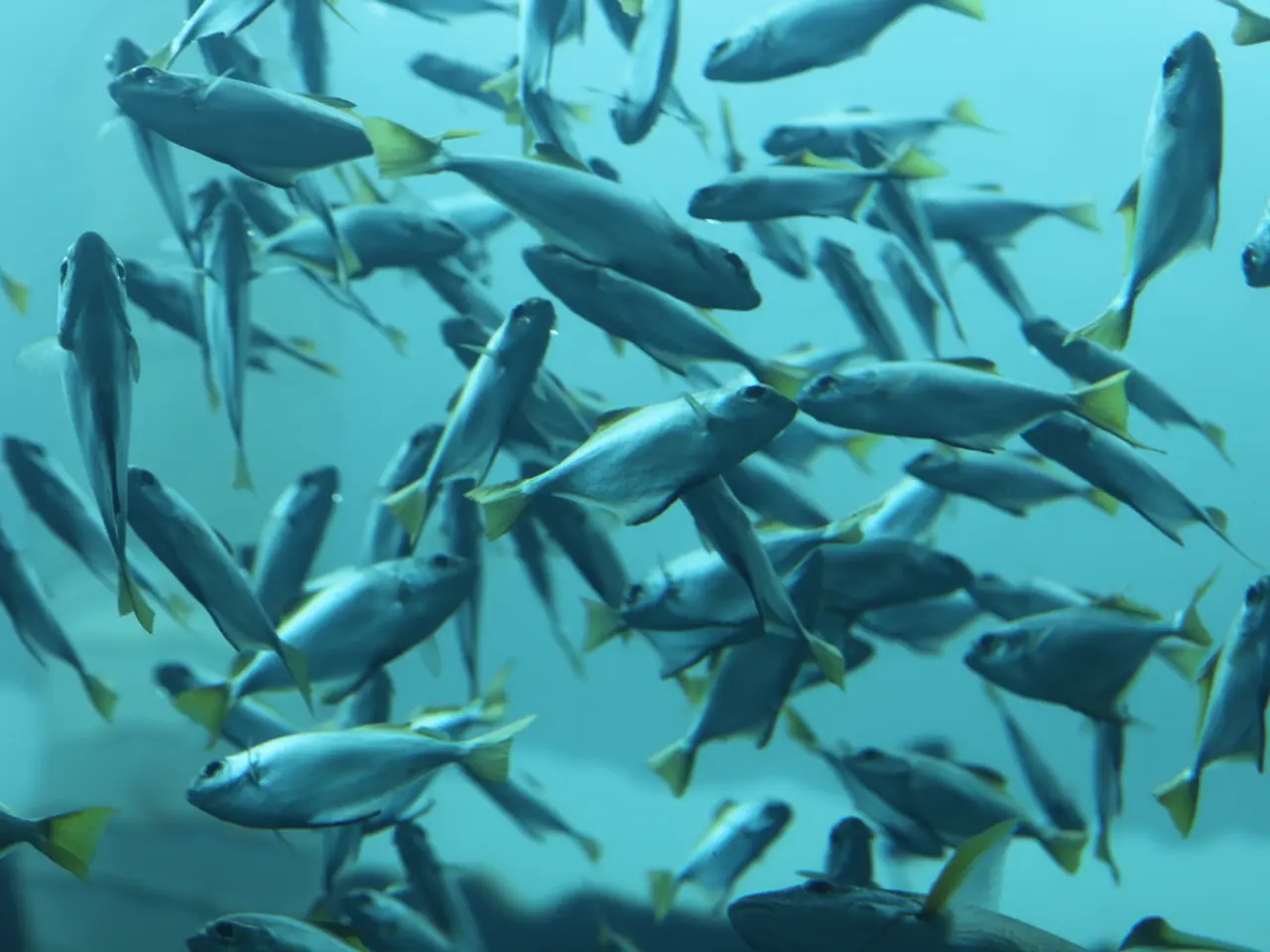Uncovering the intricacies of microbiomes in fish farms: A focus on salmon hatcheries
In a groundbreaking study, researchers from the University of California, San Diego (UCSD) and the University of Tasmania have uncovered significant findings about the influence of different salmon hatchery systems on the microbial communities of fish. The study, published in the journal Applied Environmental Microbiology, could have implications for determining which hatchery methods produce healthier and greater volumes of salmon.
Jake Minich, a PhD student at Scripps Oceanography, travelled to Tasmania to study the differences in fish microbiomes between flow through (FT) and recirculating aquaculture systems (RAS) hatcheries. His research aimed to determine which hatchery system might be best suited for fish health and growth.
Maintaining a diversity of microbial populations leads to an overall more stable ecosystem. In this study, Minich analysed the microbiomes of 60 fish across ten tanks, focusing on gills, skin, and fecal matter, as well as the water the fish were reared in.
The findings revealed that fish in RAS tanks had twice the microbial richness than those in FT tanks. Furthermore, the increased microbial diversity in fish skin and stool corresponded to larger fish sizes. RAS tanks also had greater microbial diversity in the water.
Aquaculture, the fastest growing agriculture system, produces over half of the seafood the world eats. With the next decade expected to witness continued expansion of fish aquaculture worldwide, there is a growing focus on research to connect microbiome composition with fish performance.
Eric Allen, professor of marine biology at Scripps, believes that the optimization of the fish microbiome is a sustainable approach to improve aquaculture yield. This study is one of the first to describe how the microbes in the built environment (tanks and water) are potentially seeding the fish microbiomes.
The majority of Atlantic salmon are now farmed outside of their natural range, in places such as British Columbia, Chile, and Australia. Australia, recognized for its sustainable aquaculture practices, was the setting for Minich's research.
The current report is a significant step towards connecting microbiome composition with fish performance, a key area in the optimization of aquaculture yield. As more research is conducted, it is hoped that the findings will lead to healthier and more sustainable fish farming practices, benefiting both the environment and the seafood industry.





